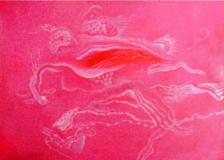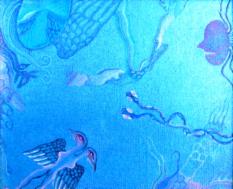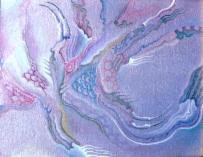Sun Liang
May 19- June 20, 2009
Opening reception: May 21st 6 - 8 PM
-Press Release-



Unexpectedly Emit Drunk Mystery
Oil on Canvas 30x21cm Oil on Canvas 32.5x26cm Oil on Canvas 19.5x27cm
For Immediate Release
Art Next Gallery is pleased to present the recent work of Sun Liang, who currently lives and works in Shanghai. The paintings of this midcareer artist reflect a deep interest in public and private mythologies, as well as a penchant for the macabre. James Ensor comes to mind especially in Sun’s brilliant, morbid visions of skulls and skeletons and female cat creatures; there is a similarity in emotional intensity as well as the kind of imagery Sun produces.
At a time when many current Chinese artists appear to be rejecting the avant-garde in favor of traditional ink painting, Sun’s work stands out for its materials—oil on canvas—and its image repertoire, which borders on the surreal and the hallucinatory. Unlike the recent interest his Chinese colleagues have shown in ink-on-paper works, Sun looks to the modernism of world culture. Moreover, he gives considerable attention to the psychological; many of his paintings appear to have been made under stress, and one remembers Sun had a serious illness as a teenager in 1972-73, one that kept him in a hospital for a year. Educated during the Cultural Revolution, Sun was also hard put to find then the Western culture he wanted so much to study. Sun’s paintings owe much of their attractiveness to the mingling of Western and Asian subjects into a coherent whole.
Sun believes that the content of his pictures originates with his imagination rather than serving as illustrations of known myths. But this does not mean that he has opted for an entirely private imagery; in fact, he has rarely shown his paintings from the late 1980s and the early 1990s, which were banned from exhibition during the conservative atmosphere following the Cultural Revolution. Now that the society is, at least on a superficial level, freer, and there is more interest in the West in Chinese art, Sun has taken it upon himself to offer works with what he calls a “dispersed perspective,” in keeping with Chinese pictorial practice. A painter who relies on his feelings, Sun looks to intuitive practices for inspiration in art. His imagery is the stuff of dreams; two-headed monsters and human fish drift through dark-blue waters. The results prove very hard to forget.